The advent of voice-controlled smart homes marks a significant leap in home automation, offering convenience, efficiency, and a futuristic lifestyle.
This article delves into the intricacies of voice-controlled smart homes, exploring their benefits, setup processes, and the future of this innovative technology.
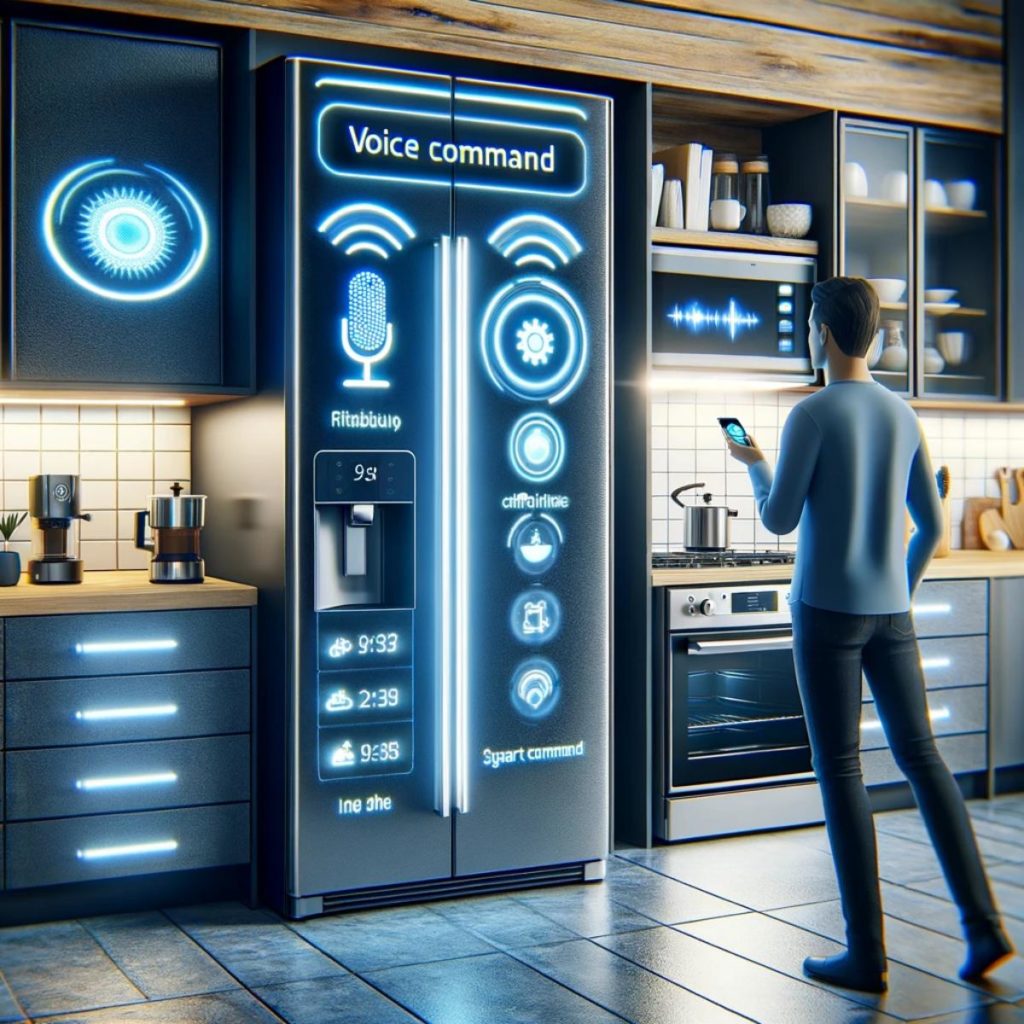
Key Takeaways:
- Voice-controlled smart homes provide enhanced convenience and efficiency.
- They integrate various home devices through voice commands for seamless control.
- Setting up a voice-controlled smart home involves selecting compatible devices and understanding their interconnectivity.
Voice-controlled smart homes represent the pinnacle of modern living, where convenience meets technology.
These homes allow users to control various aspects like lighting, temperature, and security systems through simple voice commands.
Here is an example of smart home devices that can use voice control.
- Voice-Controlled Lighting System
- Voice-controlled thermostat
- Voice-controlled home security
- Voice-controlled appliances
- Voice-controlled locks
- Voice-controlled cameras
- Voice-activated home hub
- Voice-controlled garage door
Quick Navigation in this Resource
- 1 The Evolution of Smart Home Technology
- 2 Benefits of Voice-Control in Smart Homes
- 3 Setting Up Your Voice-Controlled Smart Home
- 4 Voice Control and Home Security
- 5 The Future of Voice-Controlled Smart Homes
- 6 Advanced Insights and Future Trends in Voice-Controlled Smart Homes
- 7 Voice-Controlled Lighting System: The Future of Home Illumination
- 8 Voice-Controlled Thermostat: Revolutionizing Home Temperature Management
- 9 Voice-Controlled Appliances: Transforming Modern Homes
- 9.1 The Rise of Voice-Controlled Technology in Home Appliances
- 9.2 How Voice-Controlled Appliances Work
- 9.3 Benefits of Voice-Controlled Appliances
- 9.4 Types of Voice-Controlled Appliances
- 9.5 Setting Up Voice-Controlled Appliances
- 9.6 Challenges and Security Considerations
- 9.7 The Future of Voice-Controlled Appliances
- 10 Voice-Controlled Locks: The Future of Home Security
- 11 Voice-Activated Home Hub: Revolutionizing Smart Home Technology
- 11.1 The Core of Smart Home Automation
- 11.2 Key Features and Benefits
- 11.3 Smart Home Integration
- 11.4 Voice Assistants: The Driving Force
- 11.5 Voice-Controlled Garage Doors: The Future of Home Automation
- 11.6 How Voice-Controlled Garage Doors Work
- 11.7 Benefits of Voice-Controlled Garage Doors
- 11.8 Popular Models and Brands
- 11.9 Installation and Setup
- 11.10 Integration with Smart Home Systems
- 11.11 User Experiences and Reviews
- 11.12 Maintenance and Troubleshooting
- 11.13 Future Trends and Developments
- 12 Frequently Asked Questions
- 12.1 How Can I Enhance the Security of My Smart Home?
- 12.2 Are Voice-Controlled Smart Homes Energy Efficient?
- 12.3 Can Voice Control Integrate with All Smart Home Devices?
- 12.4 How do voice-controlled lighting systems enhance home security?
- 12.5 Can voice-controlled lighting systems be integrated with existing home automation systems?
- 12.6 Are voice-controlled thermostats difficult to install?
- 12.7 Can they help save on energy bills?
- 12.8 Are voice-controlled appliances difficult to install?
- 12.9 Can voice-controlled appliances help save energy?
- 12.10 Are voice-controlled locks secure?
- 12.11 Can they be integrated with other smart home devices?
- 12.12 Can voice-controlled garage doors work with any voice?
- 12.13 Are these garage doors compatible with all smart home platforms?
- 12.14 Can voice-activated home hubs control all smart home devices?
- 12.15 Are these hub systems secure?
- 12.16 How do these hubs contribute to energy efficiency?
- 13 Final Words
The Evolution of Smart Home Technology
The smart home landscape has evolved significantly, with voice control emerging as a key feature in modern home automation. Technologies like Z-Wave and Google Assistant have revolutionized how we interact with our homes.
For instance, Google Home can work with Z-Wave through an intermediary smart hub, facilitating control over various devices via voice commands (Source: Haven Home Tech – Google Home Zwave).
Benefits of Voice-Control in Smart Homes
The benefits of integrating voice control in smart homes are manifold:
- Convenience: Control multiple devices with simple voice commands.
- Energy Efficiency: Smart devices can optimize energy use, contributing to a greener footprint.
Setting Up Your Voice-Controlled Smart Home
To set up a voice-controlled smart home, one needs to:
- Choose compatible smart devices.
- Ensure interconnectivity between devices, like linking Z-Wave devices to a voice-controlled hub.
- Customize settings for personalized control.
Voice Control and Home Security
Voice control can significantly enhance home security by enabling voice-activated alarms and monitoring systems.
Ecobee products, for instance, work seamlessly with Google Home, allowing voice control over security devices
Does Ecobee Work With Google Home?
The Future of Voice-Controlled Smart Homes
The future of voice-controlled smart homes looks promising with continual advancements in AI and IoT.
Increased compatibility and more intuitive control mechanisms are anticipated.
For a practical look at voice-controlled smart homes, check out this YouTube video. This video offer insights into the latest trends, installation guides, and real-life applications of voice-controlled smart home technologies.
Voice-controlled smart homes are not just a futuristic concept but a present-day reality, providing unparalleled convenience and enhancing our daily lives.
As technology evolves, so will the capabilities and benefits of these innovative home automation systems.
Advanced Insights and Future Trends in Voice-Controlled Smart Homes
Continuing our exploration of voice-controlled smart homes, we delve deeper into future trends, privacy concerns, and practical tips for enhancing home security and convenience.
This segment will also include relevant internal and external links, YouTube videos, and an FAQ section.
The Privacy Paradigm in Smart Homes
One of the critical aspects of smart home technology is privacy. As these systems become more integrated into our daily lives, concerns about data security and personal privacy have risen. A detailed analysis of privacy risks in smart home technology can be found in my other article Privacy Risks In Smart Home Technology.
Table: Key Privacy Concerns and Mitigation Strategies
| Privacy Concerns | Mitigation Strategies |
|---|---|
| Data Breaches | Use secure networks and strong passwords |
| Unauthorized Access | Enable two-factor authentication |
| Surveillance Risks | Regularly review device permissions |
Enhancing Home Security with Voice Control
Voice-controlled smart homes can significantly bolster home security. Voice-activated alarms and security systems provide an added layer of protection, making homes safer and more secure.
Practical Tips for Smart Home Safety
- Strong Passwords: Ensure all devices use unique, strong passwords.
- Regular Software Updates: Keep devices updated to protect against vulnerabilities.
- Separate Networks: Use different Wi-Fi networks for smart devices.
Future Trends in Voice-Controlled Smart Homes
Looking ahead, the future of voice-controlled smart homes is marked by advancements in AI, integration of more devices, and greater ease of use.
These developments promise to make smart homes more intuitive and efficient.
Voice-Controlled Lighting System: The Future of Home Illumination
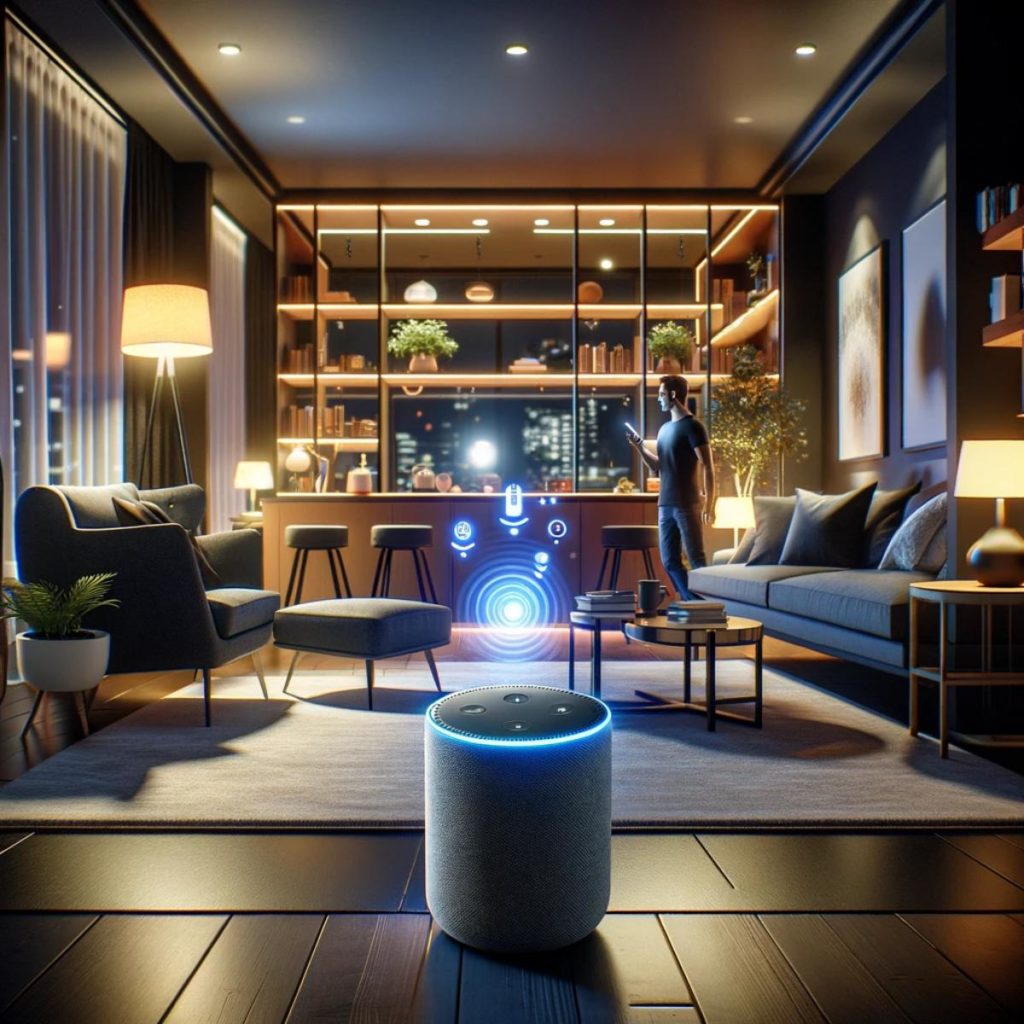
Voice-controlled lighting systems represent a significant leap in home automation technology, offering a blend of convenience, efficiency, and sophistication.
The integration of such systems in smart homes is not just a fleeting trend but a significant evolution in home innovation.
This is an improvement from motion or timer controlled lights.
How Voice-Controlled Lighting Systems Work
Voice-controlled lighting systems use advanced technology to allow users to control lighting using voice commands.
These systems typically include a voice-processing device, a lighting control device, and a lighting module, as described in a patent from Google Patents.
They work by recognizing voice commands and translating them into lighting adjustments.
Benefits of Voice-Controlled Lighting Systems
The primary benefits of voice-controlled lighting systems include:
- Convenience: Easily control lights without physical switches.
- Energy Efficiency: Adjust lights to save on energy consumption.
- Customization: Personalize lighting settings for different moods and occasions.
Integration with Smart Home Technology
Voice-controlled lighting systems can be seamlessly integrated into the broader ecosystem of smart home technologies, enhancing the user experience.
These systems are part of a growing trend towards sophisticated, interactive, and responsive home environments.
Setting Up a Voice-Controlled Lighting System
To set up a voice-controlled lighting system, one needs to select compatible devices and connect them through a central smart home system.
The process involves configuring the voice assistant to recognize specific lighting commands and ensuring all devices are connected to the same network.
The Future of Voice-Controlled Lighting
The future of voice-controlled lighting is bright, with ongoing technological advancements promising more intuitive and versatile systems.
These innovations are likely to further enhance the convenience and functionality of voice-controlled lighting in smart homes.
Voice-Controlled Thermostat: Revolutionizing Home Temperature Management
Voice-controlled thermostats are at the forefront of smart home technology, offering a seamless blend of convenience and efficiency.
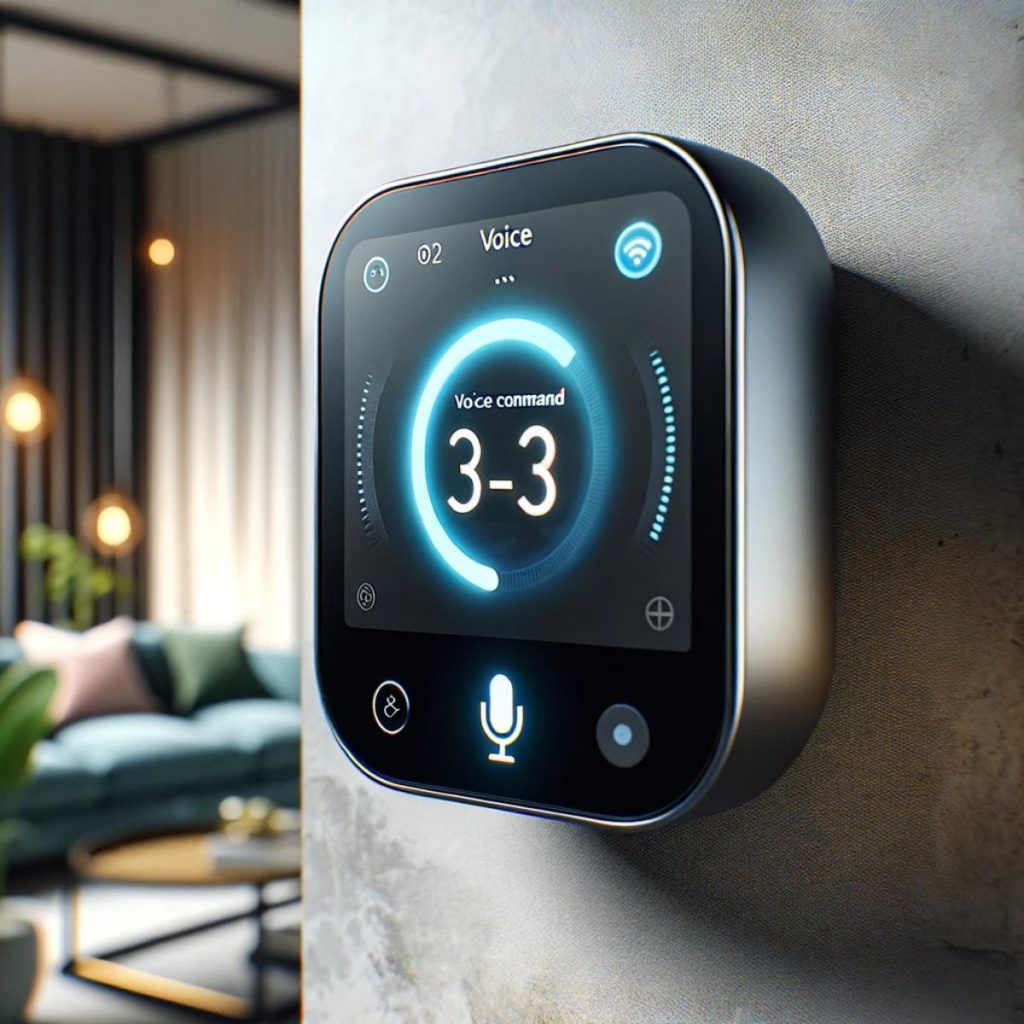
These devices are transforming how we interact with our home environments, providing a more intuitive and user-friendly experience.
Benefits of Voice-Controlled Thermostats
- Enhanced convenience with voice commands.
- Improved energy efficiency, reducing costs and environmental impact.
- Seamless integration with other smart home devices.
What is a Voice-Controlled Thermostat?
A voice-controlled thermostat is a high-tech device that allows you to control your home’s temperature using voice commands.
It’s a part of the growing trend of smart home automation, offering a hands-free and efficient way to manage your home’s climate.
The Advantages Over Traditional Thermostats
Voice-controlled thermostats offer several advantages over traditional models.
They provide more precise temperature control, can learn your preferences over time, and allow for remote adjustments through smart devices.
How Do They Work?
These thermostats work by connecting to your home’s Wi-Fi network, allowing you to control them through a smart speaker or smartphone app.
They use advanced algorithms to learn your preferences and adjust the temperature accordingly.
Integration with Smart Home Systems
These devices easily integrate with other smart home technologies, creating a cohesive and interconnected home environment.
This integration enhances the overall functionality and user experience.
Setting Up Your Voice-Controlled Thermostat
Setting up is straightforward.
It involves installing the device, connecting it to your home Wi-Fi, and setting up voice control through a compatible smart speaker or smartphone app.
Challenges and Considerations
While voice-controlled thermostats offer numerous benefits, there are also challenges to consider, such as ensuring compatibility with your home’s heating and cooling system and addressing potential security concerns.
The Future of Voice-Controlled Thermostats
The future looks bright, with ongoing innovations likely to introduce more advanced features, better integration capabilities, and enhanced user experiences.
Voice-Controlled Appliances: Transforming Modern Homes
Voice-controlled appliances represent a significant advancement in home automation, offering a blend of convenience, efficiency, and sophistication.
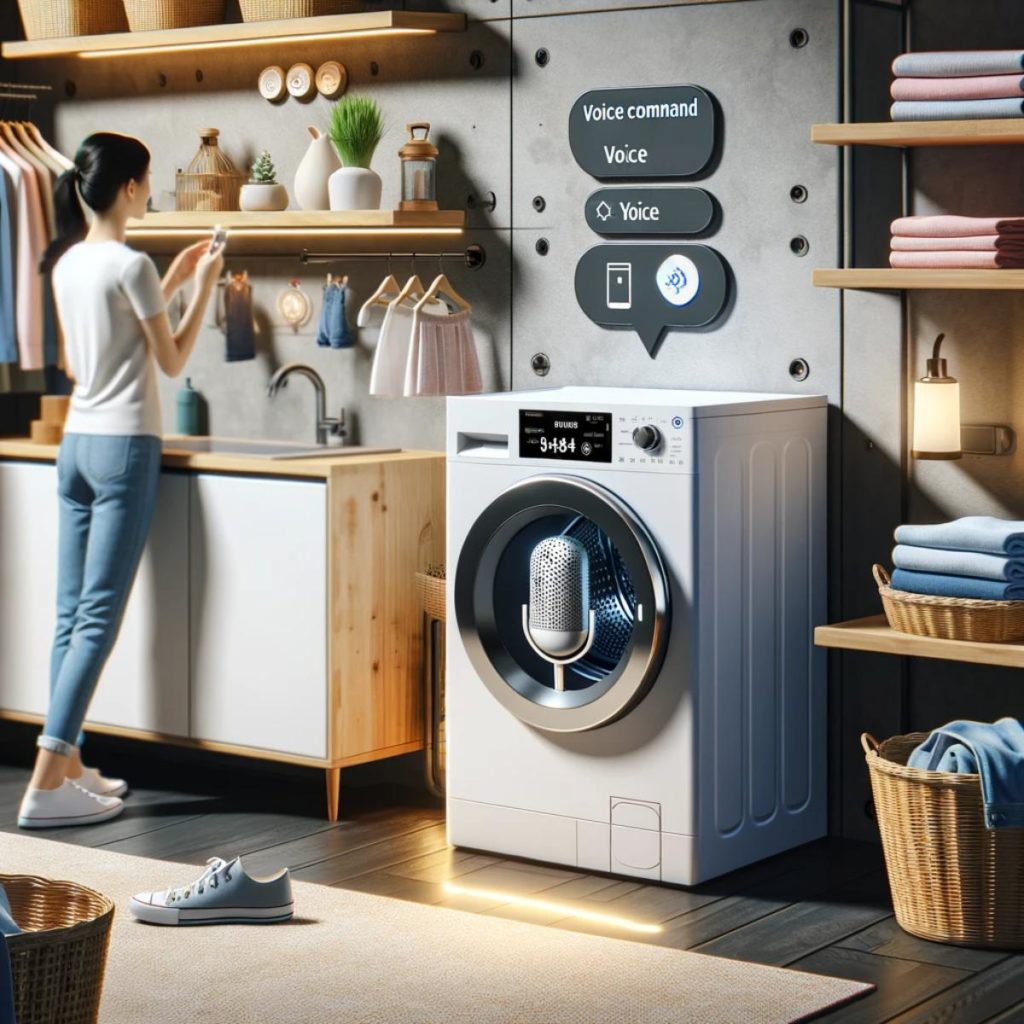
Voice-controlled appliances are a rapidly emerging trend in the smart home market. These devices allow users to control various aspects of their home environment using voice commands.
The Rise of Voice-Controlled Technology in Home Appliances
The adoption of voice-controlled technology in home appliances has seen significant growth. According to Luxury Geek, the smart home market, including voice-controlled devices, is projected to reach substantial revenue, indicating their rising popularity.
How Voice-Controlled Appliances Work
These appliances use sensors, software, and connectivity to communicate with other devices over networks like the Internet, forming part of the larger Internet of Things (IoT) ecosystem.
Benefits of Voice-Controlled Appliances
Voice-controlled appliances offer several benefits, including:
- Convenience: Easy and hands-free operation.
- Energy Efficiency: Automated and optimized energy use.
- Enhanced User Experience: Intuitive and personalized control.
- Integration with IoT and smart home systems is key to their functionality.
Types of Voice-Controlled Appliances
Examples include:
- smart refrigerator
- smart microwave
- smart washer and drier
Setting Up Voice-Controlled Appliances
The setup process involves connecting the appliance to a home network and integrating it with a voice control system, like Amazon Alexa or Google Assistant.
Challenges and Security Considerations
While voice-controlled appliances offer numerous benefits, privacy and compatibility are important considerations. Users should ensure their devices are secure and compatible with their existing home systems.
The Future of Voice-Controlled Appliances
The future promises more advanced features, better integration, and more user-friendly interfaces in voice-controlled appliances.
Voice-Controlled Locks: The Future of Home Security
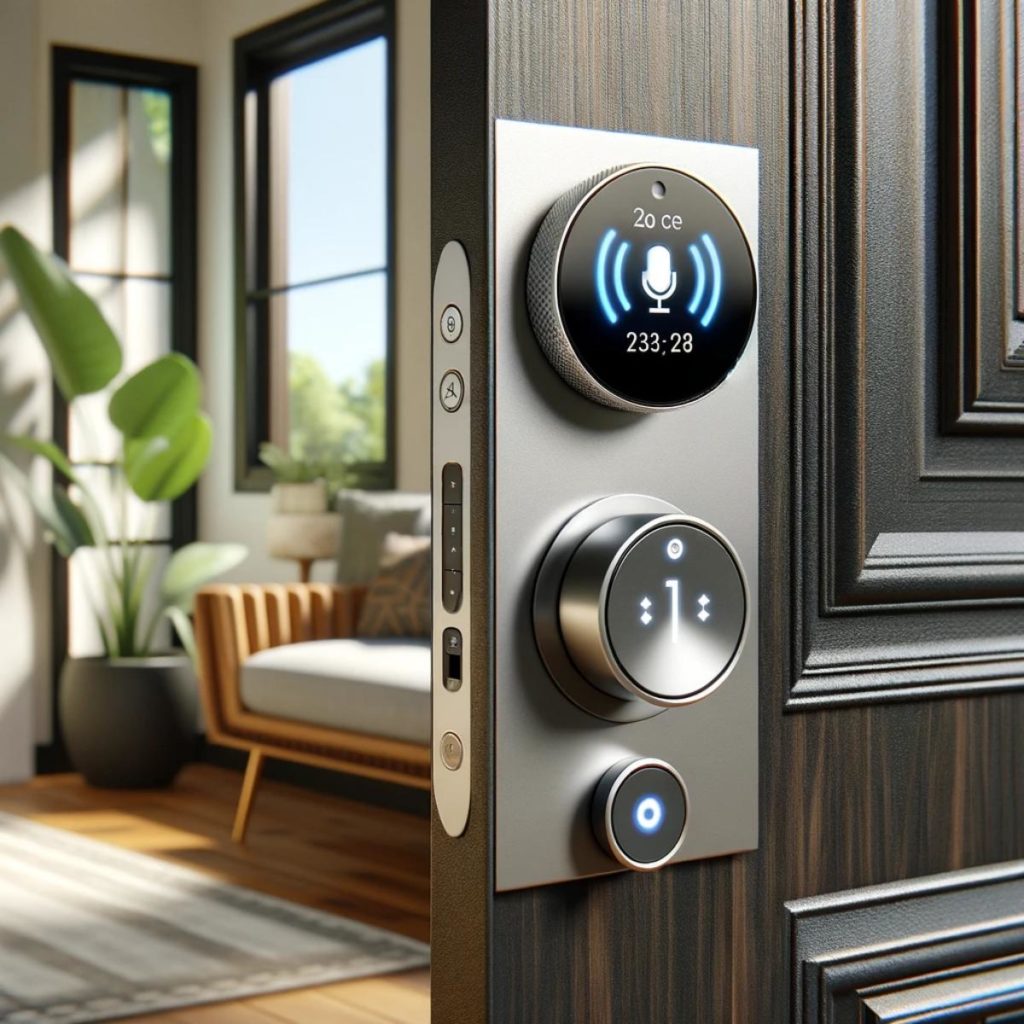
Voice-controlled locks are reshaping home security, offering a blend of convenience and enhanced protection. Integrating with smart home systems, these locks represent a significant advancement in how we secure our homes.
Voice-controlled locks mark a revolutionary shift in home security, evolving from traditional mechanical locks to sophisticated digital systems.
The Mechanics of Voice-Controlled Locks
These locks use various mechanisms, including biometric recognition and remote control via smartphones, providing enhanced security (LockManage).
Key Features and Benefits
Voice-controlled locks offer several advantages:
- Convenience: Simplified access without physical keys.
- Enhanced Security: Advanced encryption and alert systems.
- Smart Home Integration: Seamless compatibility with smart home ecosystems.
Comparison with Traditional Locks
Compared to traditional locks, voice-controlled locks provide more security features and convenient access options.
Setting Up Voice-Controlled Locks
Setting up involves installing the lock, connecting it to a home network, and setting up voice control through a smart home system.
Challenges and Security Considerations
While offering numerous benefits, these locks also raise considerations regarding privacy and security.
Integration with Smart Home Ecosystems
Voice-controlled locks are part of a broader smart home ecosystem, enhancing overall home automation and security (Luxury Geek).
The Future of Home Security
The future of home security with voice-controlled locks looks promising, with continuous advancements in technology.
In summary, voice-controlled locks represent a significant step forward in home security, offering enhanced protection and convenience. As technology evolves, they are set to become a staple in smart home systems.
Voice-Activated Home Hub: Revolutionizing Smart Home Technology
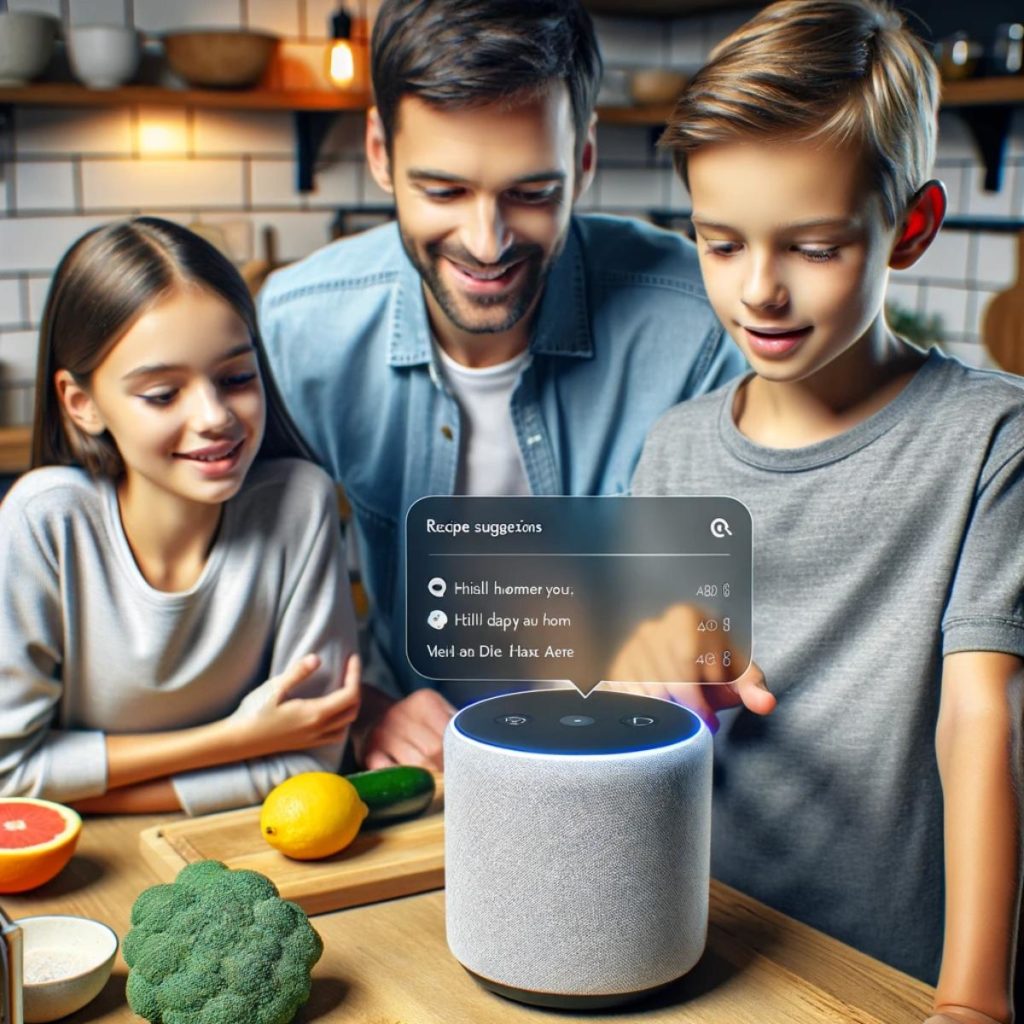
Voice-activated home hubs have become a pivotal component of modern smart home systems.
They integrate various devices and technologies to enhance comfort, convenience, security, and energy efficiency, providing a centralized control point for the entire home.
Voice-activated home hubs are an integral part of today’s smart homes. They provide a user-friendly interface for controlling various devices through simple voice commands.
The Core of Smart Home Automation
Voice-activated home hubs facilitate automation across various devices:
- Lighting and Thermostats: Control and automate lighting and temperature with intelligent scheduling.
- Security Systems: Manage surveillance cameras, door locks, and alarms remotely.
- Smart Appliances: Connect and control devices like refrigerators and washing machines.
Key Features and Benefits
Voice-activated home hubs offer numerous benefits, including:
- Convenience: Simplify tasks using voice commands.
- Energy Efficiency: Automate systems for optimal energy use.
- Enhanced Security: Monitor and control security features remotely.
Smart Home Integration
These hubs are central to creating a cohesive and interconnected smart home ecosystem. They seamlessly integrate various devices, enhancing overall home functionality and efficiency.
Voice Assistants: The Driving Force
Voice assistants like Amazon Alexa, Google Assistant, and Apple’s Siri play a crucial role in these hubs, allowing users to control various devices using voice commands.
Emerging trends suggest that future voice-activated home hubs will incorporate even more advanced technologies, such as artificial intelligence (AI), to make homes more intelligent and adaptive.
Voice-Controlled Garage Doors: The Future of Home Automation
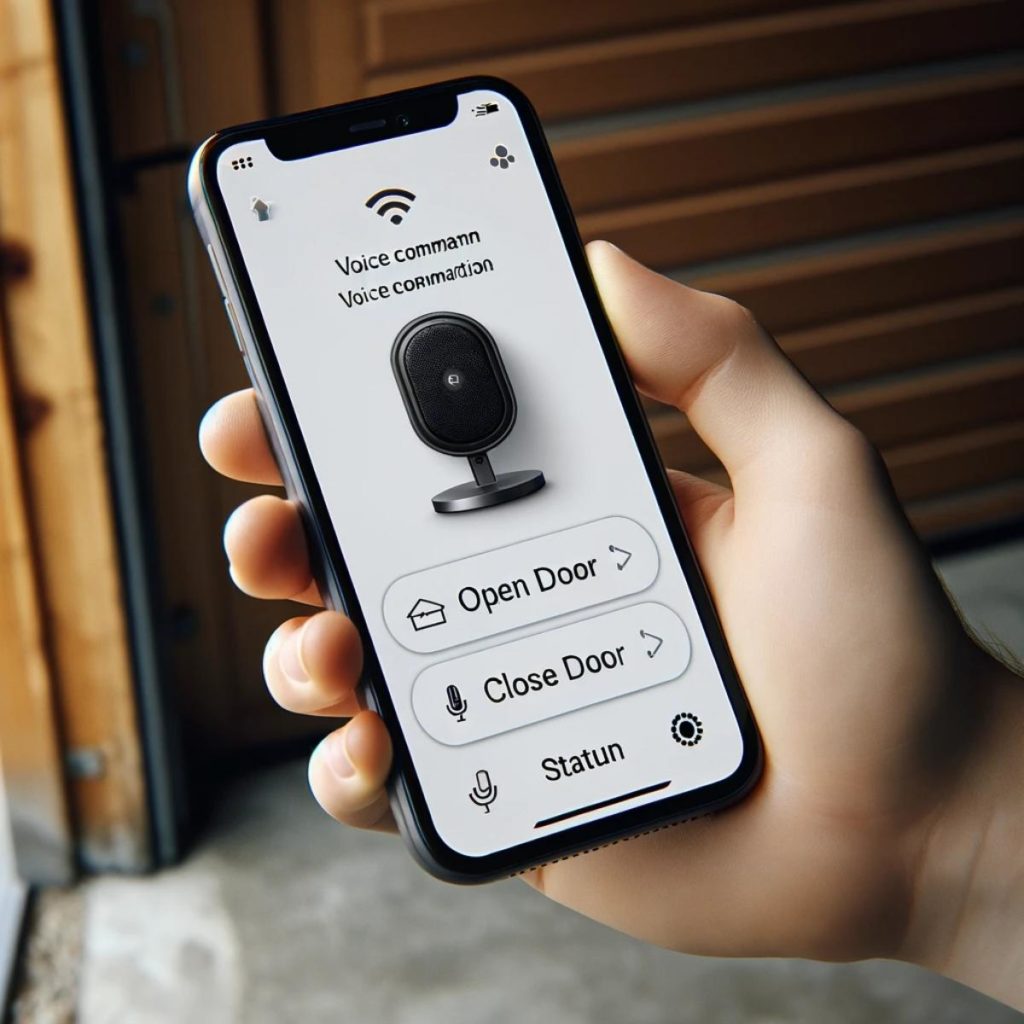
Voice-controlled garage doors represent a significant advancement in home automation, blending convenience with cutting-edge technology.
Historically, garage doors have evolved from manual to remote-controlled, and now, to voice activation.
Here is brief overview of voice-controlled garage doors, exploring their functionality, benefits, and integration into modern smart homes.
How Voice-Controlled Garage Doors Work
Voice-controlled garage doors operate using advanced voice recognition technology. This system interprets vocal commands and translates them into actions, allowing homeowners to open or close their garage doors with simple spoken words.
Integration with home automation systems like Amazon Alexa, Google Assistant, or Apple HomeKit is common, enabling seamless control within the smart home ecosystem.
Benefits of Voice-Controlled Garage Doors
The primary benefits of voice-controlled garage doors include:
- Convenience: Open and close your garage door hands-free, without the need for remote controls or physical switches.
- Security: Enhanced security features like custom voice recognition prevent unauthorized access.
- Energy Efficiency: Smart opening and closing can reduce energy waste, contributing to a more sustainable home.
Popular Models and Brands
There are several leading brands in the voice-controlled garage door market. Brands like Chamberlain, LiftMaster, and Genie offer models that vary in features and price points.
A comparative analysis reveals differences in compatibility, range, and additional smart features.
Installation and Setup
Installing a voice-controlled garage door involves several steps, which can be handled DIY or by professionals. Key considerations include compatibility with existing garage door mechanisms and the smart home network.
Tips for successful installation include:
- Ensure compatibility with your current garage door system.
- Follow manufacturer guidelines for optimal setup.
Integration with Smart Home Systems
Voice-controlled garage doors can integrate with various home automation platforms, including Google Home, Amazon Echo, and Apple HomeKit. Users can create routines and link the garage door with other smart home devices for a fully automated experience.
User Experiences and Reviews
Customer testimonials often highlight the convenience and security benefits of voice-controlled garage doors. Common praises include ease of use and integration capabilities. However, some users have noted challenges with voice recognition accuracy and compatibility issues.
Maintenance and Troubleshooting
Regular maintenance can extend the life and efficiency of a voice-controlled garage door. Tips include:
- Regularly checking and calibrating voice recognition settings.
- Ensuring software and firmware are up-to-date.
Common issues like connectivity problems or voice recognition errors can often be resolved with simple troubleshooting steps.
Future Trends and Developments
The voice-controlled garage door industry is poised for further innovation.
Anticipated developments include improved voice recognition accuracy, enhanced security features, and deeper integration with other smart home devices.
In conclusion, voice-controlled garage doors offer a blend of convenience, security, and technological advancement, marking a significant step in the evolution of smart home automation.
Frequently Asked Questions
How Can I Enhance the Security of My Smart Home?
Regularly update your devices, use strong, unique passwords, and consider two-factor authentication.
Are Voice-Controlled Smart Homes Energy Efficient?
Yes, they can optimize energy use and contribute to a greener living environment.
Can Voice Control Integrate with All Smart Home Devices?
Most modern smart devices are compatible with voice control systems like Google Assistant and Amazon Alexa.
How do voice-controlled lighting systems enhance home security?
These systems can be programmed to respond to specific voice commands, allowing for quick adjustments in case of an emergency.
Can voice-controlled lighting systems be integrated with existing home automation systems?
Yes, most of these systems are designed to be compatible with existing smart home platforms.
Are voice-controlled thermostats difficult to install?
Most are designed for easy installation, but it’s important to ensure compatibility with your existing HVAC system.
Can they help save on energy bills?
Yes, by optimizing temperature settings based on your habits and preferences, they can lead to significant energy savings.
Are voice-controlled appliances difficult to install?
Most are designed for easy integration with existing smart home systems.
Can voice-controlled appliances help save energy?
Yes, by optimizing operations based on user habits and preferences.
Are voice-controlled locks secure?
Yes, they often feature advanced security protocols.
Can they be integrated with other smart home devices?
Most voice-controlled locks are designed to seamlessly integrate with smart home systems.
Can voice-controlled garage doors work with any voice?
Most systems can be trained to recognize specific voices for added security.
Are these garage doors compatible with all smart home platforms?
- Compatibility varies by brand and model, so it’s essential to check before purchasing.
- Most systems can be trained to recognize specific voices for added security.
Can voice-activated home hubs control all smart home devices?
Most modern smart home devices are compatible with these hubs.
Are these hub systems secure?
Yes, but it’s important to keep the software updated and use strong network security measures.
How do these hubs contribute to energy efficiency?
They automate device operation, optimizing energy use for efficiency.
Final Words
In conclusion, voice-controlled smart homes represent the convergence of technology and convenience, bringing forth a future where our homes are more responsive, secure, and aligned with our lifestyles.
As we embrace these advancements, staying informed and proactive about privacy and security is paramount. Remember, a smart home is not just about technology; it’s about enhancing the quality of life.
Pingback: Future Trends In IoT Home Automation